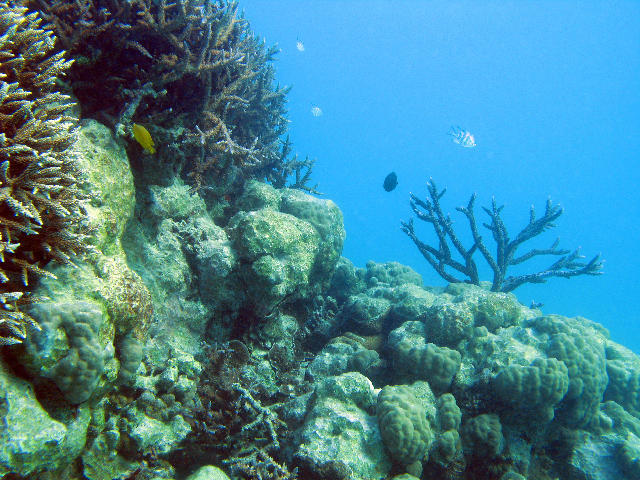Important Facts about Coral Reefs
Key News ContributorJuly 30, 2017

stanhorns and other hard croals growing in the coral sea, queensland, australia
Important Facts about Coral Reefs
South Florida’s coral reefs came into existence 5,000 to 7,000 years ago when sea levels rose following the last Ice Age. Reef growth is extremely slow; an individual colony grows ½ inch to 7 inches (1 cm to 18 cm) per year, depending on the species and environmental conditions.
Coral reefs are built predominantly by scleractinian (“stony”) corals, with contributions from octocorals, coralline algae, calcareous algae and other invertebrates. Polyps, the living portion of corals, extract calcium from seawater and combine it with carbon dioxide to construct the elaborate limestone skeletons that ultimately form the reef structure.
Though corals are classified as animals, microscopic plants, called symbiodinium, live within the animal tissues in a symbiotic relationship. The coral polyps benefit from the energy that the symbiodinium provide through photosynthesis, the process by which light energy is converted to chemical energy.
Up to 99 percent of the inorganic carbon fixed by symbiodinium through photosynthesis is translocated to the coral host. The symbiodinium are protected within the coral tissue and gain nutrients from coral colony’s wastes. Disturbances such as increased temperature and irradiance can disrupt this mutualistic relationship between the corals and the symbiodinium often causing coral bleaching.
Coral reef development occurs only in areas with specific environmental characteristics: the presence of coralline algae on solid structure for attachment, warm, nutrient poor waters low phosphate and nitrogen, and moderate wave action to disperse wastes and bring oxygen and plankton to the reef. Southeast Florida reefs form the northern extension of the Florida reef tract.
Generally, the reefs occur in a series of one to three discontinuous reef lines (terraces) that parallel the shoreline, extending north from the Florida Keys to Martin County. Coral reef communities within Florida waters are categorized as hardbottom, patch reef, or bank reef.
How much are coral reefs worth?
Coral reefs are invaluable natural resources. Not only do they protect our coastal areas by reducing wave action from tropical storms and hurricanes, but they also create specialized habitats that provide shelter, food and breeding sites for numerous plants and animals. Most of south Florida’s sport fish species and many other marine animals spend significant parts of their lives around coral reefs. South Florida reefs are also a tremendous resource for recreation, education, scientific research, and public inspiration attracting 16 million visitors per year.
Millions of tourists and local residents enjoy scuba diving, snorkeling, and fishing on Florida’s coral reefs. These activities provide a vital source of income for south Florida and its coastal communities. It is estimated that natural reefs in Martin, Palm Beach, Broward, Miami-Dade and Monroe counties generate $6.3 billion dollars to the local economy and support more than 71,000 jobs annually.


